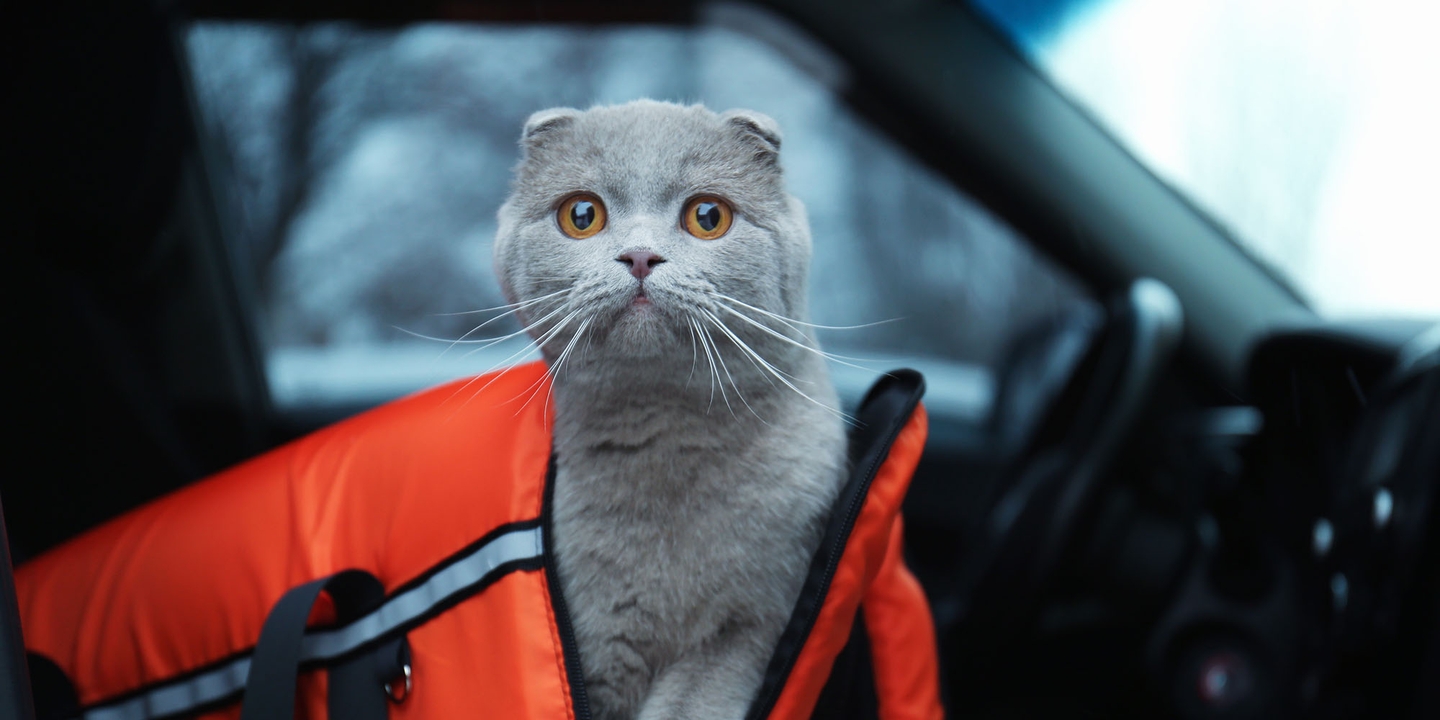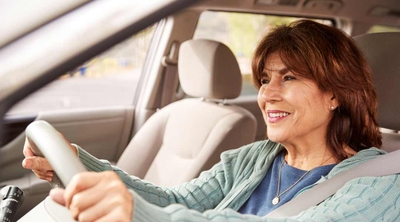Car safety for dogs and cats
3 min read
A pet left loose in the car can become a projectile in an accident and suffer serious injury or even death. If you’re traveling with pets in a car, securing them with a crash-tested carrier, crate, or harness can help protect them – and you – in case of an accident.
What is the safest way for a dog or cat to ride in a car?
The safest way for a dog to ride in a car is in the back seat or cargo area with a crash-tested harness, carrier, or crate. Plenty of products claim to keep your dog safe in a car, but dog seat belts, tethers, and zip lines aren’t the best options because they won’t fasten your pet in place. As a result, pets may experience greater harm if they are involved in a crash.
A CNN news story reports that in a vehicle traveling just 30 miles per hour, a 10-lbs dog who is unrestrained can injure other passengers and become severely injured in a vehicle crash. Safety for cat car travel is like dog car travel. Your cat should be able to stand up, turn around, and lie down comfortably in the carrier or crate. It should be positioned as close to your vehicle’s center as possible and secured in place. Learn about what we learned in a pet car safety survey of pet owners.
How to safely travel in a car with a dog or cat
Review crash test ratings for pet safety in cars
With so many pet safety products on the market, having an independent source with unbiased crash test ratings can be helpful. When selecting a product to keep your pet safe while traveling in a car, you can consult The Center for Pet Safety. This non-profit organization has conducted independent crash testing on dozens of carriers, crates, and harnesses since 2011. They refer to products that pass their certification testing as “Elite Performing Products.” Multiple harnesses, carriers, and crates have passed their certification testing to receive CPS certification.
Use carriers and crates
Carriers and crates should be large enough for your dog or cat to stand up, turn around, and lie down comfortably. Ideally, you would position them as close to the car’s center as possible. They should be attached to the car’s seat belt or another restraint system if positioned on the rear passenger seat. If in the cargo area, it’s best to have the crate tied down or otherwise secured in place. A rubberized cargo mat or liner is also a good way to protect your vehicle from a mess.
For larger dogs, a crate is your best bet. Crates are made of sturdier materials like plastic or metal, making them more expensive than carriers and requiring more room in the car. But crates provide substantial safety benefits for your pet.
Smaller dogs and cats will be much safer in the car if they ride inside a carrier instead of on your lap or loose in the backseat. Carriers are made of lightweight fabric and designed for easy transport. The best car carriers will have a strap that you can secure with a seatbelt.
Use harnesses or pet seat belts
Usually reserved for dogs, these are specialized harnesses different from the harness you’d use while walking your dog. They integrate with your car’s seat belt to keep your dog secured. Harnesses should generally keep your pet sitting upright. Harnesses that allow your pet to lie down may not provide proper spinal protection in the event of an accident.
Other important pet travel safety tips
Make sure pets are covered by insurance
Pet insurance can help with any emergency care you may need while traveling. Also be prepared to get them back if they get lost. Having your pet microchipped is optimal, but at the very least, they should have a collar with an ID tag with your cell phone number and address and a picture of your pet handy. For a longer trip, you might want a temporary tag with contact info for your place.
Don’t leave pets unattended
Unattended cars can get hot very quickly, even with the windows open. In addition to this heatstroke risk, cars can get dangerously cold in the winter.
Pack pet travel supplies
Make sure you have a kit ready with food, water, and any medications they need on longer car rides. Bowls, waste scoops, and plastic bags are a necessity. And if you’re traveling to another state, you may need to take their vaccination documentation.
Prepare your pets for car trips
Short drives to places they like, and rewards, can help pets get acclimated and prepare them for longer trips. Bringing a favorite toy or blanket can help put them at ease, too.
With longer car trips, feed your pet about four hours before you leave. Taking this time allows them to digest and relieve themselves so they won’t be looking for their next meal immediately. Getting dogs some extra exercise before you leave may help them settle down and rest during the ride.
Take breaks
On longer car trips, stop every few hours to let pets eat and relieve themselves. Don’t feed a pet in a moving car — that’s a recipe for an upset stomach.






